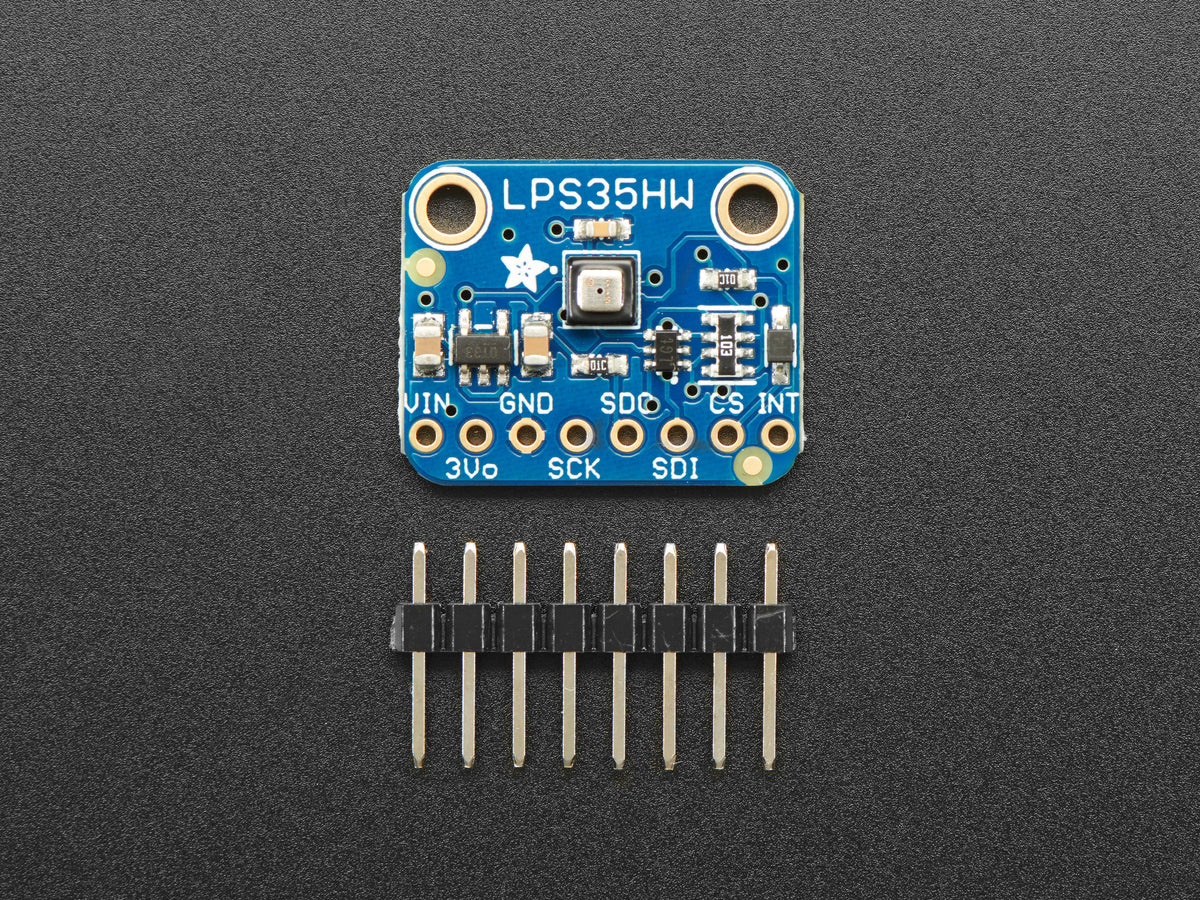Adafruit
Adafruit LPS35HW Water Resistant Pressure Sensor, STEMMA QT, 4258
Adafruit LPS35HW Water Resistant Pressure Sensor, STEMMA QT, 4258
Couldn't load pickup availability
Sometimes you need to sense pressure in a damp environment. And sometimes you need to know the relative changes in pressure as well as the absolute pressure. For the times you need to do both (or either), the LPS35HW is the pressure sensor for you. Combining protection from water intrusion with support for high precision relative and absolute measurements, this sensor will do what you need. With drivers for CircuitPython, Arduino, and Raspberry Pi, and support for I2C or SPI (Arduino only SPI support, for now) you'll be measuring pressure in moist situations in no time.
The ST LPS35HW is a water resistant barometric pressure and temperature sensor that is also safe to use in wet environments. The sensing element is nestled safely in a ceramic package and is encased in a waterproof gel that prevents water that gets into the sensor from interfering with readings. It does not carry any ratings for resistance to moisture so you probably don't want to take it to the bottom of the Mariana Trench, but it should work well for normal wet situations like weather stations or high humidity.
Along with not being afraid of getting wet, the LPS35HW has a 24bit pressure data and 16 bit temperature data, allowing it to deliver pressure readings with +/- 0.1% hPa accuracy. It can measure from 260 to 1260 hPa and is able to withstand pressure up to 20 times its measurement range.
To help you take measurements to your requirements, the LPS35HW also offers an adjustable data rate, as well as a low pass filter to remove noise from the signal. Finally, the onboard temperature compensation makes sure that your readings are always good and won't vary as the temperature changes.
We placed this sensor on a breakout board with a 3.3V regulator and level shifting circuitry so it can be used by 3V or 5V power/logic devices. A small piece of header is also included, so you can solder it in for use with a breadboard.
Please Note: The sensor itself is advertised as Water Resistant, but the breakout board for testing out this sensor is not! If you want to use it in wet environments, you'll need to put the rest of the board in a waterproof epoxy!
Downloads






